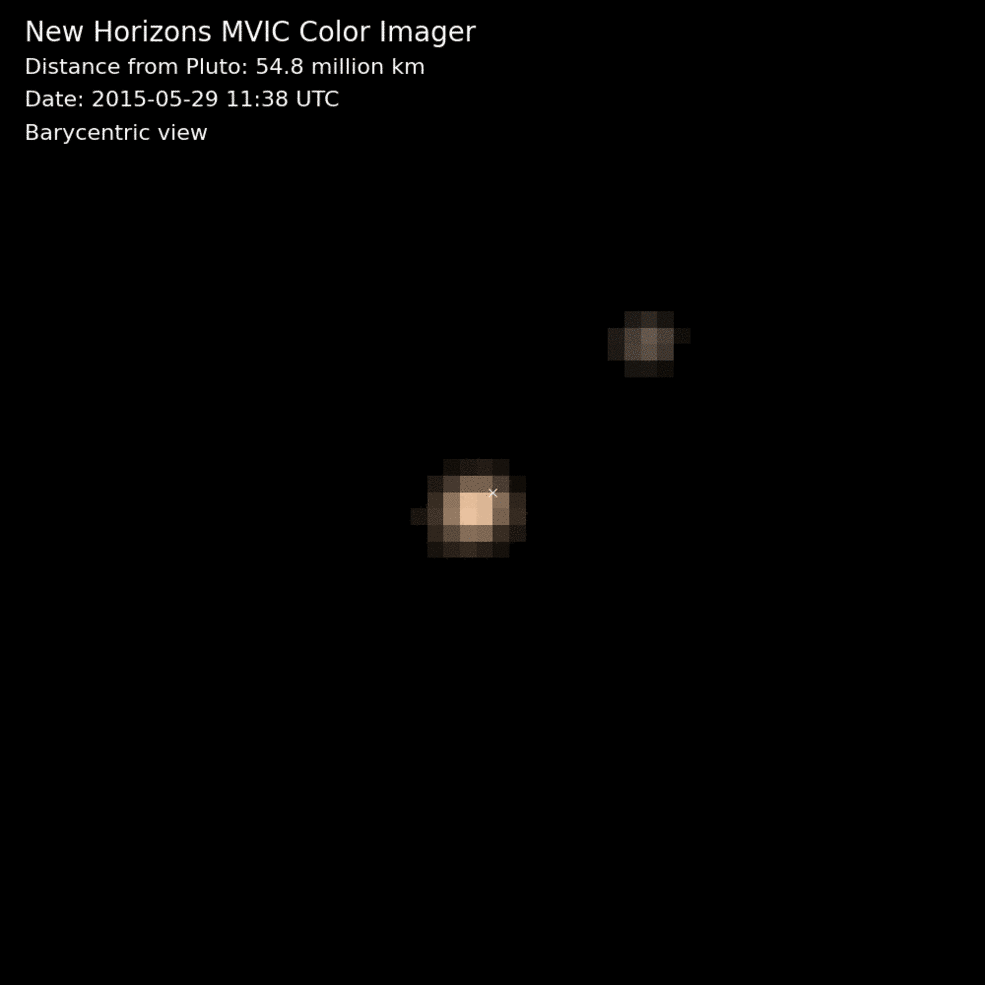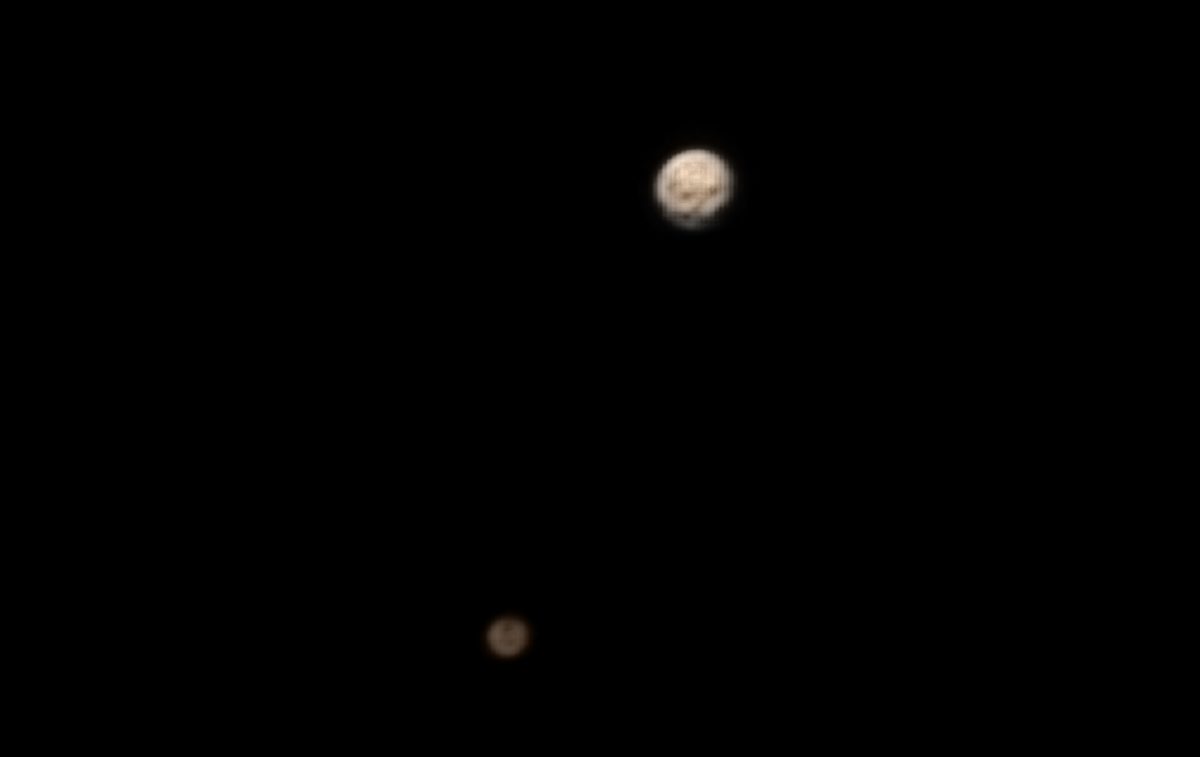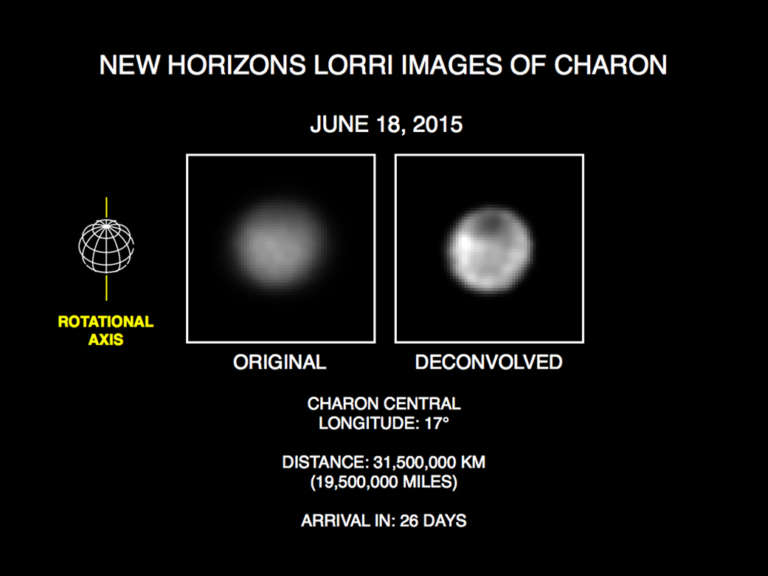Emily Lakdawalla • Jun 23, 2015
New Horizons update: Resolving features on Charon and seeing in color
Only about three weeks remain until the flyby — it's getting really close! I almost don't want the anticipation to end. We are now officially in Approach Phase 3, the final Approach phase. During this phase, covering the period from 21 to 1 days before closest approach, the range to Pluto will decrease from 26 to only 1.2 million kilometers. LORRI has a very narrow field of view, only 0.29 degrees; as of June 24, New Horizons will be close enough to Pluto that the orbit of Hydra (Pluto's outermost moon) no longer fits completely within a single LORRI field of view. Here's one of the best recent views of Pluto and Charon, processed by Björn Jónsson:

Because of Pluto's slow, 6.4-day rotation, Approach Phase 3 includes the best, second-best, and third-best rotation coverage before closest approach, yielding the best global maps of Pluto and Charon. The fields and particles instruments, PEPSSI and SWAP, may detect pickup ions and the bow shock in the very last days of this phase. LEISA and Alice can begin looking for variability on the surface in infrared and ultraviolet wavelengths. Later in this phase, LORRI and Ralph will search for clouds or hazes, and if there are visible clouds, they can track winds.
There was a brief mission update this morning on NASA TV. The spacecraft is healthy, and has successfully performed deep searches for previously undiscovered moons and dust hazards. Pluto's faintest moon, Styx, is now "a piece of cake" to detect with the LORRI camera, but no other moons beyond Charon, Kerberos, Hydra, Styx, and Nix have been found. This is very good news for spacecraft safety.
A programming note: I'm taking a pre-Pluto vacation starting tomorrow, until July 3. While I'm gone, the apparent size of Pluto will double! The following week, I'll be headed to Maryland to be on site at the Applied Physics Laboratory when all the most exciting data arrive on the ground.
But let's talk about what we can see now. The spacecraft is finally close enough that its Ralph Multicolor Visible Imaging Camera, or MVIC, is resolving Pluto and Charon as disks several pixels across. These early images still don't reveal details like LORRI's do; they're a promise of what's to come. They do show how Pluto has distinctly more color than Charon. Don't over-interpret the color, though; MVIC sees into the infrared, so it's not quite the same as what the human eye would see.

MVIC color data can be used to colorize higher-resolution LORRI images, and that's exactly what Ian Regan did here. At this point, it's not really worth trying to figure out what all the spots on Pluto are; some of them are surely just image processing artifacts. Wait just a couple weeks and we'll find out what the face of Pluto really looks like! For today, just enjoy the pretty view.

Meanwhile, although spottier Pluto gets all the press, Charon is beginning to show off surface features, too.

So excited!!
Support our core enterprises
Your support powers our mission to explore worlds, find life, and defend Earth. You make all the difference when you make a gift. Give today!
Donate

 Explore Worlds
Explore Worlds Find Life
Find Life Defend Earth
Defend Earth

